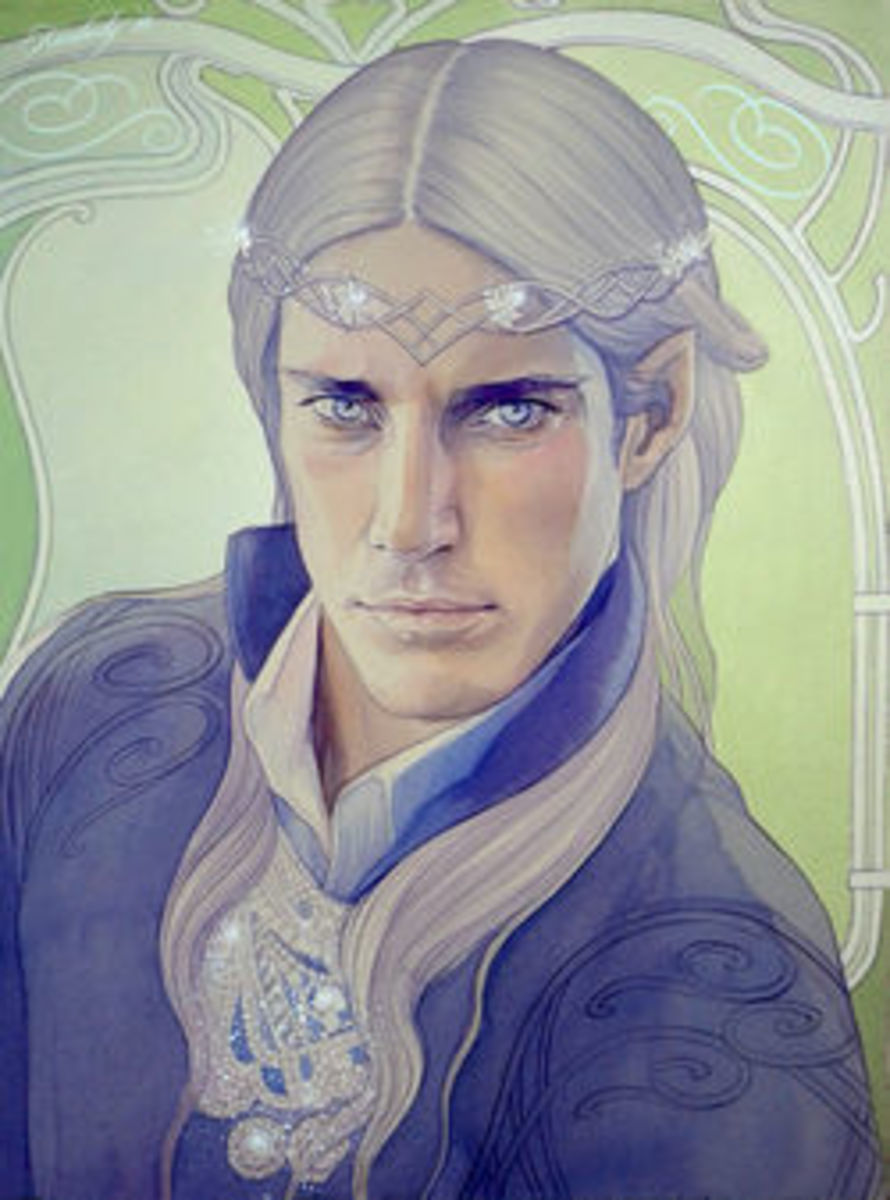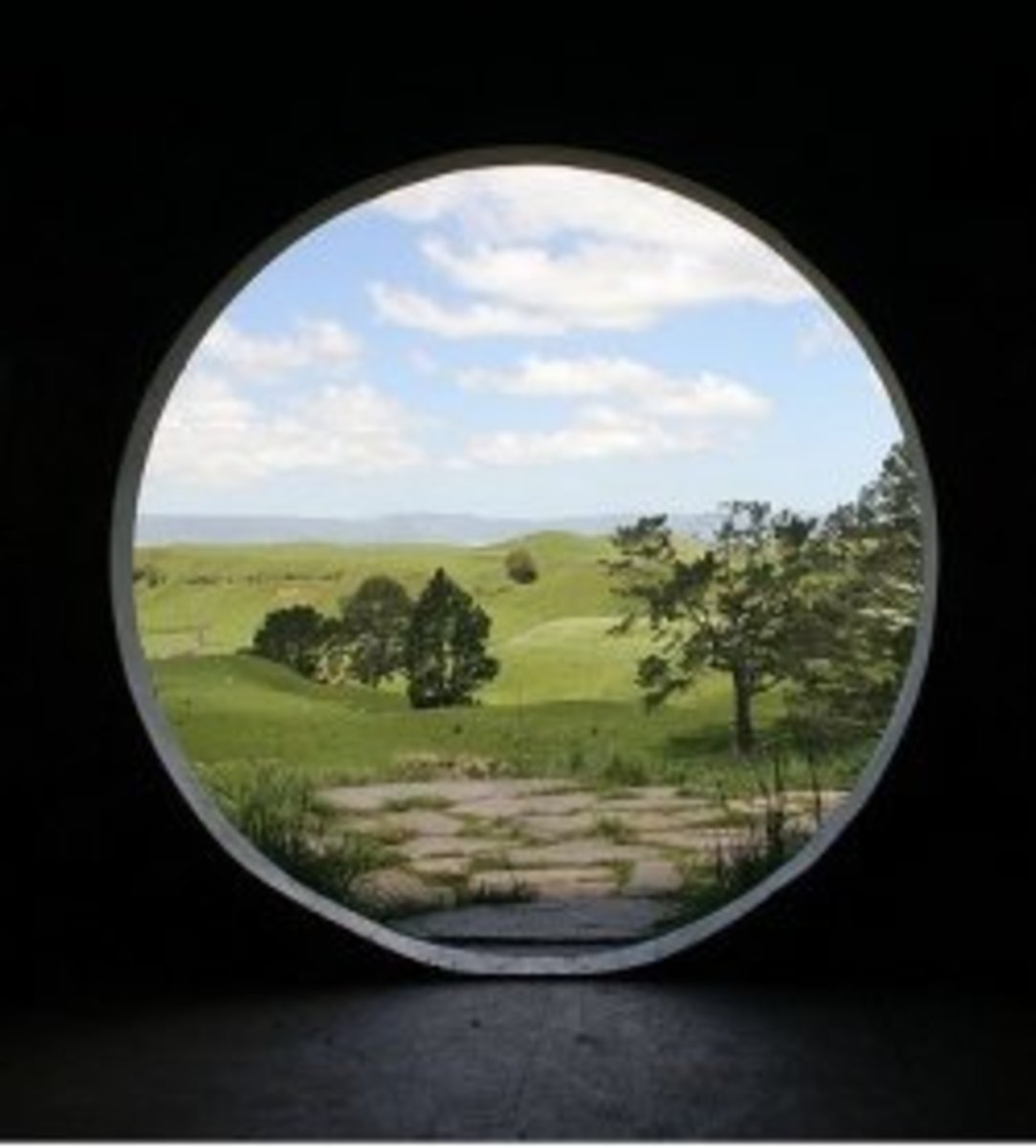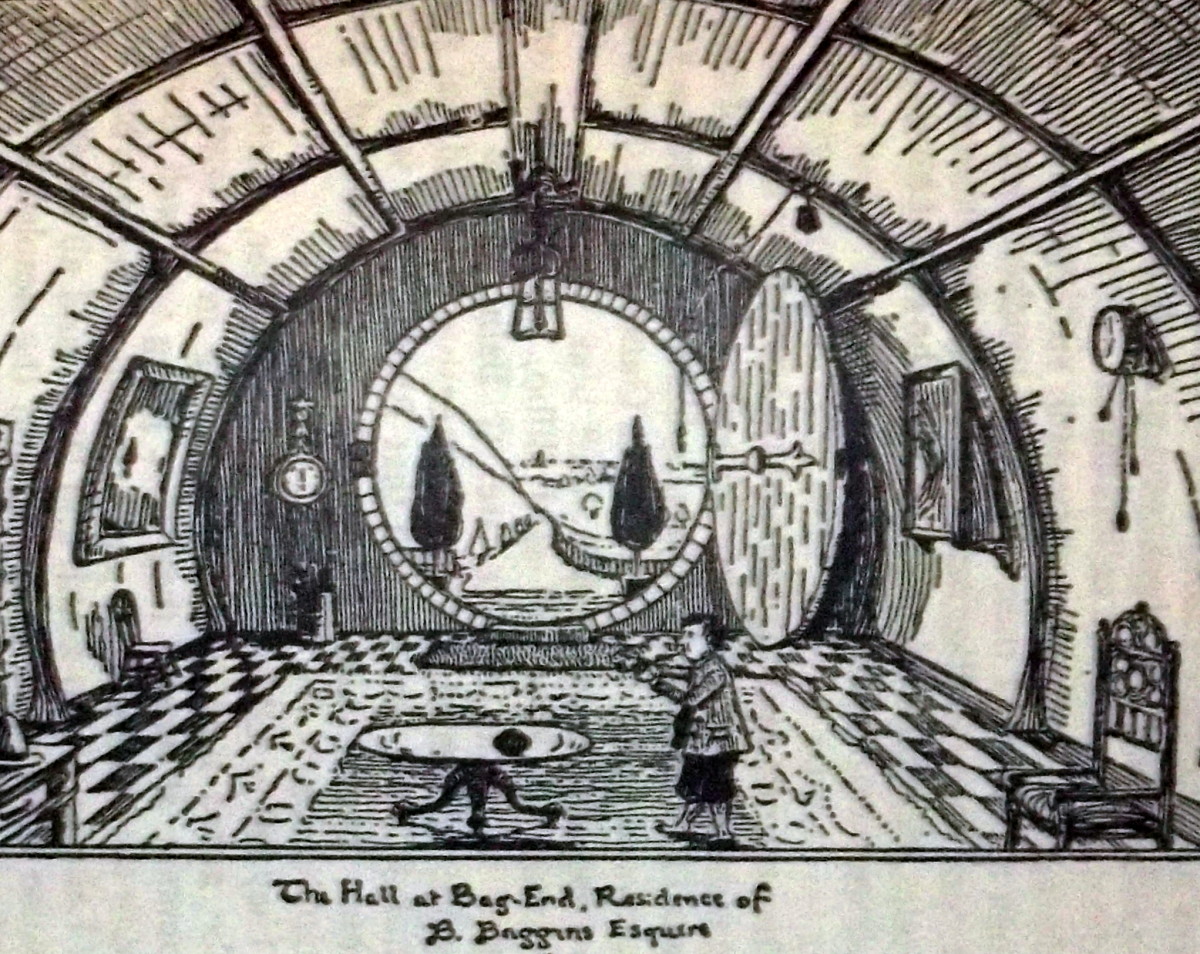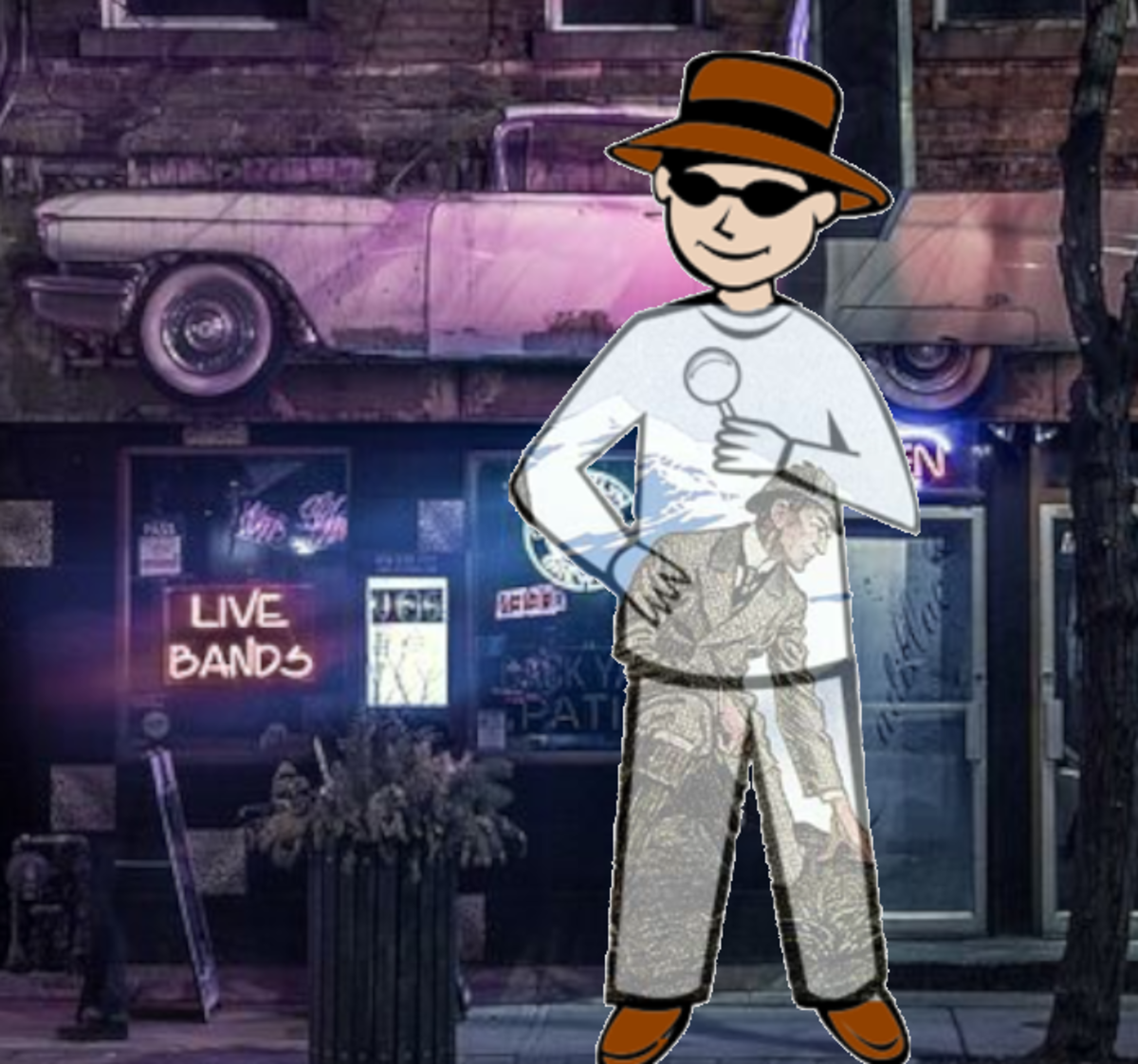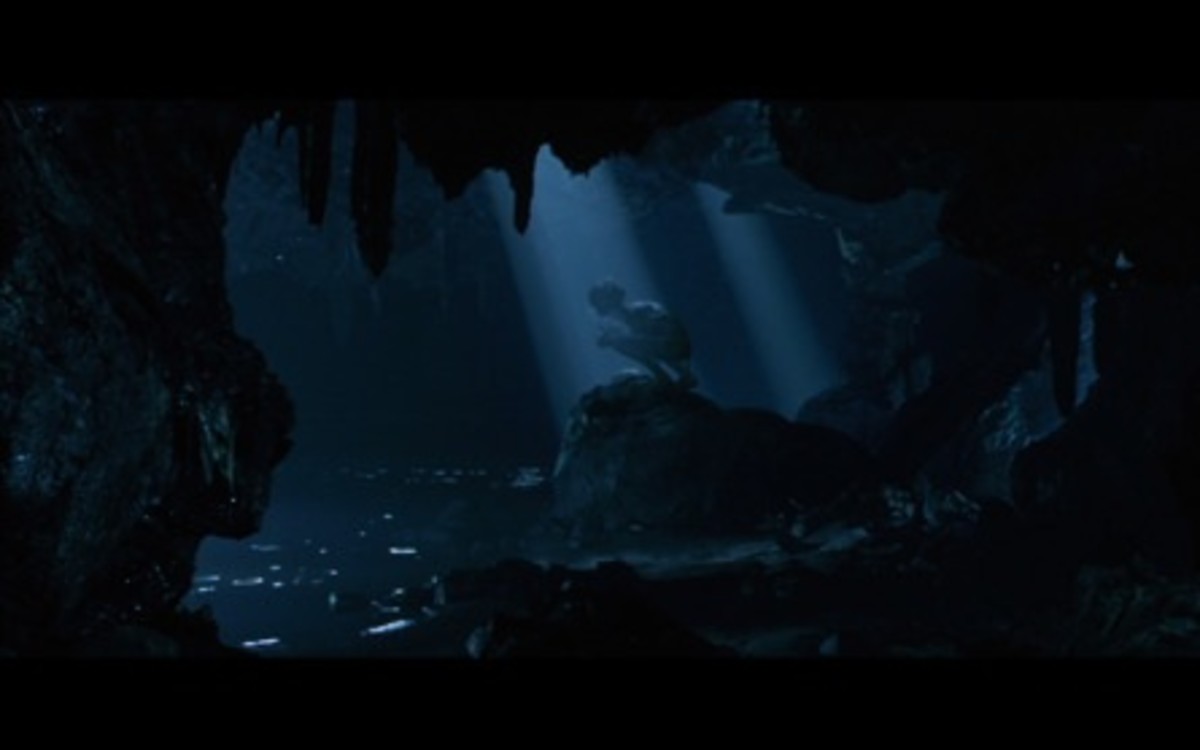Mirkwood Forest in the Hobbit
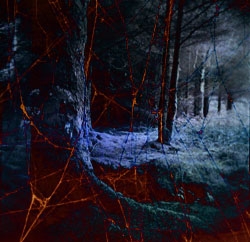
The Woodland Realm, Greenwood the Great
Mirkwood Forest, once called Greenwood the Great, has a fascinating history, hinted at in The Hobbit and developed further in The Lord of the Rings and Tolkien's unpublished writings. From them we learn the tragic story of King Oropher, Legolas' grandfather. He was a survivor of the upheavals of the West in the First Age. Scarred by war and feuds between noble houses, he wished to shield the innocent, rustic Wood-elves from the griefs of Middle-earth.
Alas, King Oropher was slain in the Last Alliance, and his son Thranduil the Elvenking could not wholly defend the Woodland Realm from the darkening world. Retreat as they might, the shadow of evil fell hard upon and twisted the very forest they loved.
The years darkened. The Necromancer established Dol Guldur, a fortress on the very borders of Mirkwood. Into the darkening forest crept one hobbit and thirteen dwarves, ignorant of its history and the silent battle being waged within its bounds.
[Note: My fan page about Mirkwood is gleaned from J.R.R. Tolkien's The Hobbit, The Lord of the Rings, Unfinished Tales, Letters, J.R.R. Tolkien: Artist and Illustrator, and other posthumously-published works, NOT from Peter Jackson's The Hobbit films.]
As is told in Unfinished Tales, the Wood-elves or Silvan Elves were a race apart.
Before the First Age of the world began, the Elves had traveled westward across Middle-earth, invited by the Valar to set sail from its coasts into the Undying Lands. However, some Elves turned aside.
Why should they follow the summons of powers they did not understand and abandon this land they loved? The forests were vast, the meadows bright with flowers; rivers and lakes sparkled under the bright stars. The Misty Mountains were taller and more terrible in those days, or so the tales say: a formidable wall placed in their path by an ancient foe. The Wood-elves' ancestors refused to cross the Misty Mountains, and so never came to the western lands where great battles were fought and all the elf-kingdoms destroyed in the First Age.
They settled in Wilderland, east of the mountains. Mirkwood was just one of their homes. They also established themselves in the Golden Wood, Lorinand (Lothlorien) to the south. Their other forest realms have been forgotten.
Silvan Elves were simple, living in harmony with the natural world. They hunted, they fished, they built huts and houses of wood in the edge of the forests or in the tree-tops, and they feasted in glades under the stars. Before Oropher and his exiled household came among them, they had little or no smithcraft: no forged metal, no shining jewels, no gear for war. Never did they adopt the skills of writing or of civilization. Their language was slightly different from that of their western kin.
Of Mirkwood's Many Names
Greenwood the Great and Many Other Names
For much of its history, Mirkwood was named Eryn Galen, "Green wood" in Sindarin Elvish, referred to in the Common Tongue as Greenwood the Great.
When the Necromancer -- later discovered to be Sauron -- set up the Fortress of Dark Sorcery, Dol Guldur, on the southern borders of the forest in around the year 1100 of the Third Age, Mirkwood began to go dark. Giant spiders filled it with horrible webs, the shadows thickened, orcs and other evil things crept into it, and the Elves retreated north. The forest then acquired the name Taur-e-Ndaedelos, "Forest of Great Fear," (Appendix F, LOTR). It also came to be known as Taur-nu-Fuin, "Forest of Darkness," i.e. Mirkwood in the Common Tongue. (Unfinished Tales p. 293.)
After Sauron was defeated for good at the end of the Third Age, King Thranduil and Lord Celeborn of Lórien renamed Mirkwood Eryn Lasgalen, the Wood of Greenleaves. (Appendix B, LOTR)
Tolkien's Drawing of the Elvenking's Gates

Of the Elvenking and His Family
Sindarin Princes of a Woodland Realm
According to Unfinished Tales and the appendices of The Lord of the Rings, the Woodland Realm came to be ruled by a noble family that fled back east over the Misty Mountains at the beginning of the Second Age.
King Oropher's family were Sindarin Elves, distant cousins of the Wood-elves who had crossed the Misty Mountains and settled in the great forests in the West of Middle-earth. They had become more civilized, building mighty palaces of stone, amassing great treasures, learning smithcraft and stonecraft and writing in runes, and arming themselves for war. Unfortunately, the Sindarin elves also became embroiled in wars against the Great Enemy, Morgoth, to whom Sauron was but a lieutenant. Alas, it was not Morgoth, but feuds with Dwarves and with the Elves who returned from the Undying Lands that wiped out most of the Sindar.
King Oropher was distressed by the feuds that had turned Elves against Elves. So he took his household and fled east, joining the rustic Wood-elves who lived far away from all these conflicts. For several thousand years he and his family adopted the Silvan elves' ways. However, when Sauron began to threaten all of Middle-earth at the end of the Second Age, Oropher reluctantly broke his policy of isolation and led an army of Wood-elves south to join the Last Alliance.
They were slaughtered. With simple leather armor, bows and swords, they were ill-equipped for war. Oropher fell leading an ill-advised charge against the Black Gate. King Thranduil his son led a third of his father's army home at the end of the war.
Therefore Thranduil was a grim soul, despite the merry hearts of his woodland people. He built an underground palace of stone on the northeastern eaves of Mirkwood, a stronghold against future threats. He maintained friendly ties with Dale and the Lake-men to the east. Year by year his people retreated northwards from the shadows that spread from Dol Guldur, until only the far northeastern eaves of the wood were guarded by their bows, spears, and harp-song.
Of Elves and Dwarves
The Origin of the Elvenking's Ill-Will
There were three reasons why Thranduil the Elvenking had no love for Dwarves.
First, he remembered an ancient feud between Dwarves and the Sindar at the end of the First Age. The Sindarin King Thingol had possessed a beautiful jewel, a Silmaril, and hired the Dwarves to create a fitting housing for it. When he saw the fine necklace they had created for it, he refused to pay them (so the Dwarves later claimed), and they attacked and slew him, hauling away the jewel and many of his treasures. These were recovered after a battle between Elves and Dwarves, but from that time on relations between the races were strained.
Second, the Dwarves who settled in Moria had stirred up the Balrog and orcs which attacked and darkened the forest of Lórien to the south of Mirkwood. Thranduil's kin ruled there -- until the Balrog drove them away -- and they blamed the dwarves for stirring up the Enemy in their greed for mithril. Some of the Moria-refugees also settled at the Lonely Mountain, to the annoyance of Thranduil; it had formerly been part of his father's kingdom.
Third, according to The Hobbit, "In ancient days they [the Elves] had had wars with some of the dwarves, whom they accused of stealing their treasure. It is only fair to say that the dwarves gave a different account, and said they only took what was their due, for the elf-king had bargained with them to shape his raw gold and silver, and had afterwards refused to give them their pay. If the elf-king had a weakness it was for treasure, especially for silver and white gems; and though his hoard was rich, he was ever eager for more, since he had not yet as great a treasure as other elf-lords of old. His people neither mined nor worked metals or jewels."
This sounds much like the story of King Thingol, but is clearly meant to refer to Thranduil, who built a stone palace and tried to amass a hoard in imitation of King Thingol in the First Age.
Since Oropher's realm had formerly extended to the Lonely Mountain, after Smaug was slain, Thranduil set forth with an army of Elves to stake a claim to the dwarf-treasure (some of which he felt belonged to him).
Of Mirkwood's Geography
Map of Mirkwood and Notes on Its Neighbors
On the northeast border of Mirkwood was the Elvenking Thranduil's Woodland Realm. In the Second Age, it had extended over the whole forest and included the lands east to Dale. However, the dragon to the east and Sauron's new fortress Dol Guldur to the south had encroached on his borders, driving a wedge between him and his father's former allies to the south in Lórien.
The East Bight was an area felled by the Woodmen, distant cousins of the Men of Dale and of the Riders of Rohan who had originally come from the fields and vales west on Mirkwood. Woodmen continued to live in the "Narrows" midway between north and south, but raids by goblins (orcs) and other foul creatures threatened them.
The fortress of Dol Guldur was built on Amon Lanc, the "Naked Hill," which had been the seat of King Oropher's realm before rumors of Sauron drove him north during the Second Age. He had resettled in the Mountains of Mirkwood, Emyn Duir. His son Thranduil moved his people north sometime after the Last Alliance, probably after Dol Guldur was built in 1050 of the Third Age. At the time, nobody knew the Necromancer was Sauron returned; they thought it was probably a Nazgul or some other terrible figure.
After the War of the Ring, Thranduil took control of all of Greenwood the Great and renewed relations with Lord Celeborn of Lórien to the south, whose people were kin to Thranduil's.

